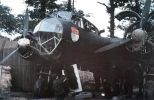
Dornier 17591 viewsThe Dornier 17, were the mainstay of the German bombers during the Blitz on Britain and especially London. Dornier 17 had been an easy target for the Spitfires and Hurricanes of Fighter Command but had proved itself to be a valuable part of the Luftwaffe in campaigns that led up to this battle. The Luftwaffe valued the plane as was shown by production levels for the plane at the start of the war. 1,700 Dornier 17's were built between 1939 and 1940. It made its mark in the attack on Poland in September 1939 and its versatility was such that it was used as a bomber, reconnaissance plane and as a pathfinder by the Luftwaffe. Its limitations were shown in the Battle of Britain, however, when it became clear that the plane was very vulnerable to attacks from the rear and from below and that its defensive armaments were poor. As with other German bombers, against a poor air force, the Dornier 17 did well and the Luftwaffe clearly was over-confident as to its capabilities.
|
|

Savoia-Marchetti S.73591 viewsThree-engined transport aircraft, a low-wing airplane with fixed landing gear. Its lines would become typical for the Savoia- Marchetti designs. Some were used by the Italian airforce, including four which -- having originally been sold to Belgium -- had served with the RAF before they were captured in North Africa!
|
|
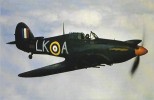
HAWKER HURRICANE Mk IIC591 viewsThis most famous partner to the Spitfire was the predominant fighter in use by the RAF during the Battle of Britain. Designed by Sidney Camm, this aircraft was the first RAF fighter to exceed 300mph & the first eight gun monoplane to enter service. This aircraft saw service throughout the war & was the mount of many great pilots of the War years. It is an interesting & judicious point to note that there were 1,326 Hurricanes & 967 Spitfires on strength during the Battle of Britain, a fine testimony to this fine aeroplane, This particular aircraft was flown by Sqn. Ldr. D. G. Smallwood.
|
|
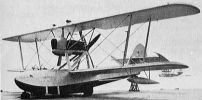
Savoia-Marchetti S.62586 viewsBiplane flying boat. The S.62 was not accepted by the Italian armed forces, but some were built for civilian operators and 24 for the USSR. 29 more were built in the USSR.
|
|
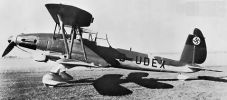
arado ar81582 viewsThe chief rival to the legendary Ju 87, the V3 was superior in most respects but the Ju 87 was chosen primarily due to the fact that the Ju 87 was a monoplane.
|
|
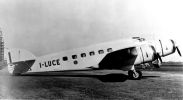
Savoia-Marchetti S.M.83582 viewsThis version was a civil transport version in a 10-passenger configuration. it was powered by 3 × Alfa Romeo 126 RC.34 radial, rated at 750 hp (559 kW)
Number built: unknown out of 23 S.M.83
|
|
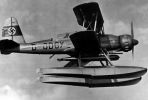
Arado Ar 95570 viewsSix examples of the Ar 95A-0 were built for the Legion Kondor in Marjorca with half of these airframes later being transferred to Nationalist Spain. An additional six were built to fulfill an export order with Chile, half the airframes had floats while the remainder had fixed gear. The final production run comprissed roughly a dozen examples being built for the Luftwaffe and assigned to 3/SAGr 125 in the Baltic and south Finland after the invasion of Russia.
|
|
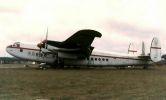
Avro 685 York563 viewsA transport development of the Lancaster, with a bigger fuselage of rectangular cross-section and an additional tailfin. Production during WWII was limited because it was agreed that the US would supply transport aircraft.
|
|
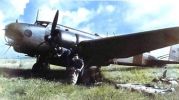
FIAT BR.20 "Cicogna"562 viewsThe Fiat BR.20 Cicogna was the standard Italian bomber of the mid to late 1930's, but it proved to be already obsolete during the French campaign during Italy's entry into World War Two. This bomber was first proposed by Celestino Rosatelli , who envisioned a standardized bomber, in 1934. The two engine BR.20 was first flown on 10 February 1936 at Torino Alitalia and the first 20 units were delivered on 26 November 1937.
Although the aircraft looked realtively sleek and modern, it was already outclassed by other competitors. Nevertheless, a total of 234 BR.20's, 279 BR.20M's and 15 BR.20Bis were built. The BR.20M (Modified) and the BR.20Bis were unique to the original in the change of nose section and engines. These aircrafts were operated in Malta, Battle of Britain, Yugoslavia and the Balkans.
|
|
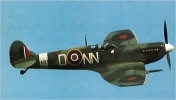
SUPERMARINE SPITFIRE Mk Vc557 viewsPossibly the most famous of all fighters, this particular aeroplane was re-activated to take part in the film "Battle of Britain" in which it flew nearly 50 hours. Now flying reularly at the Shuttleworth Collection.
|
|
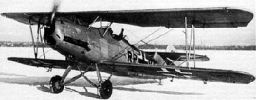
Arado Ar 66c554 viewsThe Ar 66 equipped flying schools from 1933 until into WWII. Over 6000 were built, maybe even 10000. Some were used as night harassments bombers on the eastern front.
|
|
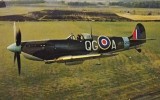
VICKERS ARMSTRONG SUPERMARINE SPITFIRE Mk 1A544 viewsSingle seat fighter powered by a Rolls Royce Merlin II or III liquid cooled in line engine. Maximum speed: 367mph. Armament: eight .303 machine guns. First deliveries to No. 19 Squadron Duxford, June 1938.
|
|
|
|